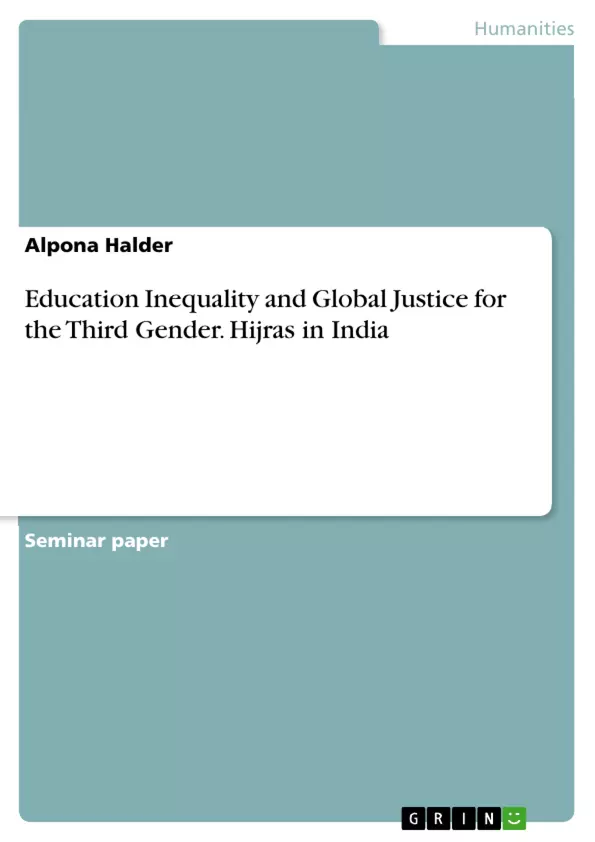Far and beyond the world of education and global social justice lays the unknown mysterious world of Eunuchs who are better known as Hijras in India. The reality of their existence is still a secret and their omnipresence in the Indian society is unavoidable. They have always remained an integral part of the Indian society from ancient time. But unfortunately their present state of existence has been reduced to abject poverty, illiteracy, hatred and mockery. Strangely when the whole world is immersed in the rights and laws for gays and other homosexuals; the Hijras are still living in the shadow of rejection from every basic right to equality and education. They have only become the topic for exploration and research for their strange appearances. The world at large has forgotten that they are also human beings and have equal rights like everybody. The negative attitude of the people and their segregation from the society has left them with no opportunity. The Indian government has only given them the right to vote but they face a bleak future without any access to education.
Inhaltsverzeichnis (Table of Contents)
- Introduction
- Defining Hijras
Zielsetzung und Themenschwerpunkte (Objectives and Key Themes)
This case study examines the social and educational marginalization of Hijras in India, a group often referred to as the "third gender." It explores the historical and cultural context of their existence, the challenges they face in accessing education and other basic rights, and the impact of societal attitudes on their well-being.
- The complexities of gender identity and sexuality in India
- The historical and cultural understanding of Hijras in Indian society
- The impact of societal stigma and discrimination on Hijras, particularly in the realm of education
- The lack of legal recognition and protection for Hijras, resulting in limited access to rights and opportunities
- The need for inclusive educational policies and practices that cater to the needs and identities of all individuals, including Hijras.
Zusammenfassung der Kapitel (Chapter Summaries)
Introduction
This chapter introduces the topic of Hijras in India, highlighting their historical presence and current marginalization. It emphasizes the lack of access to basic rights, including education, and the need to challenge societal prejudices and discrimination.
Defining Hijras
This chapter delves into the definition and understanding of Hijras, exploring various theories about their origins and the cultural and societal perceptions that shape their identities. It examines the complexities of their gender identity and the challenges they face in being recognized and accepted as a distinct group within Indian society.
Schlüsselwörter (Keywords)
The study focuses on key terms and concepts such as Hijras, third gender, gender identity, social exclusion, education inequality, cultural stigma, legal rights, and social justice.
- Citation du texte
- Alpona Halder (Auteur), 2013, Education Inequality and Global Justice for the Third Gender. Hijras in India, Munich, GRIN Verlag, https://www.grin.com/document/295334



